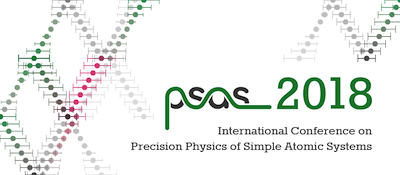Speaker
Description
\documentclass[11pt,a4paper]{article}
%\documentstyle[epsf,12pt]{article}
\usepackage{epsfig}
\usepackage{graphicx}
\usepackage{eurosym}
\usepackage{multicol}
\usepackage{subfig}
\usepackage{caption}
\usepackage{times}[11pt]
\usepackage{geometry}
\geometry{a4paper, portrait, margin=3cm}
%\textwidth = 15.59cm
%\hoffset = -0.54cm
%\topmargin = 0.5cm
%\headheight = 0.5cm
%\headsep = 0.5cm
%\voffset = -0.54cm
%\oddsidemargin = 0.7cm
%\marginparsep = 0.2cm
%\marginparwidth = 1.0cm
\def\refname{------------------------}%<----------
\begin{document}
\thispagestyle{empty}
%%%%%%%%%%%%%%%%%%%%%%%%%%%%%%%%%%%%%%%%%%%%%%%%%%%%%%%%%%%%%%%%%%%%%%%%%%%%%%%%%%%%%%
\begin{center}
{\Large \bf
% Title of your contribution:
Direct Frequency Comb Spectroscopy on Hydrogen and Associated Systematic Frequency Shifts
\bigskip\}
% Author list, presenting author :
Alexey Grinin$^{a}$, Arthur Matveev$^{a,b}$, Lothar Maisenbacher$^{a}$, Vitaly Andreev$^{a}$, Dylan Yost$^{c}$, Randolf Pohl$^{a}$, Theodor W. H\"ansch$^{a,b}$, Thomas Udem$^{a}$\
% Affiliation(s), assignment needs to be done manually
$^a$ {\em Max-Planck Institut f\"ur Quantenoptik, 85748, Garching, Germany}\
$^b$ {\em Ludwig-Maximilians-Universit\"at, M\"unchen, Fakult\"at f\"ur Physik, Schellingstrasse 4/III, 80799 ¨
M\"unchen, Germany}\
$^c$ {\em Physics Department, Colorado State University, 1875 Campus Delivery, Fort Collins, CO, 80521}\
\end{center}
% Your abstract text:
High precision spectroscopy has been always the driving force for new fundamental
theories in physics. The so called proton size problem is a so far unexplained disagreement of the value of the proton charge radius extracted from the muonic spectroscopy,
hydrogen spectroscopy and elastic electron-proton scattering by more than 5 sigma ~\cite{Antognini2013}. Recently two new experiments intensified this puzzle ~\cite{Bayer2017}, ~\cite{Fleurbaey2018}.
\newline
\newline
For the first time we present a high precision measurement in hydrogen on the 1s3s(F=1) performed with Direct Frequency Comb Spectroscopy (DFCS ~\cite{Baklanov1977}), with an uncertainty sufficient to contribute to the Proton Size Puzzle. Systematic frequency shifts observed with DFCS differ significantly from previous measurements which utilize CW lasers and in particular from the previous 1s3s (F=1) measurement, allowing for the first time comparison of two different groups on the same transition for the proton size puzzle.
\newline
\newline
In our experiment we excite a cryogenic hydrogen atomic beam with a picosecond frequency comb. The UV frequency comb at 205nm is produced by quadrupling a TiSa comb at 820nm by two subsequent frequency doubling stages. While two-photon transitions are in principle Doppler free in first order, residual Doppler shift associated with chirped pulses is observed and constitutes our leading systematic. Other significant systematics are Second Order Doppler Effect, collisional shift and AC/DC Stark Effects. We present experimental determination of these systematics and comparison with the theory.
%References (<10)
\begin{thebibliography}{9.}
%\frenchspacing
\setlength{\itemsep}{0em}
\setlength{\parskip}{0em}
\bibitem{Antognini2013} A. Antognini {\em et al}, Science {\bf 339}, (2013) 417
\bibitem{Bayer2017} Axel Bayer, Lothar Maisenbacher {\em et al}, Science Vol(358), (2017) Issue (6359)
\bibitem{Fleurbaey2018} H. Fleurbaey {\em et al}, https://arxiv.org/abs/1801.08816
\bibitem{Baklanov1977} Y. V. Baklanov and V. P. Chebotayev, Appl. Phys. 12, (1977) 97
\end{thebibliography}
\end{document}

